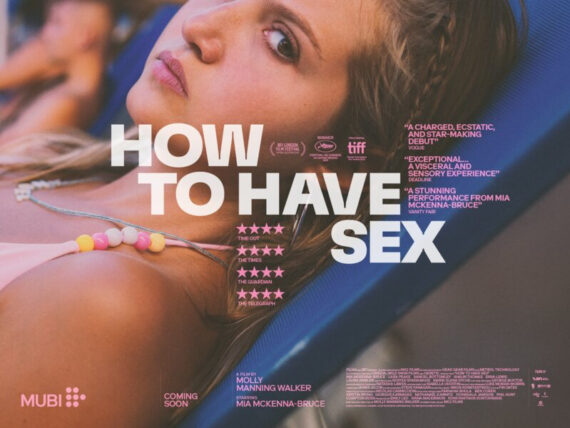A discussion of ‘Blue is the Warmest Colour’, by Film Programmer Anna Navas.
While most film reviews of this Cannes prize-winning film have universally praised it, the author of the original graphic novel that the film was based on has said, “As a feminist and a lesbian spectator, I cannot endorse the direction Kechiche took on these matters”.
If there was one film in the current cinema programme that was going to stir a debate it was Blue Is the Warmest Colour.
Having first seen the film at the 2013 London Film Festival I found myself in a minority of viewers who hated it at first sight and who wondered what all of the critical fuss was about. To me it felt voyeuristic and judgemental casting Adele, the main character, as the victim of both her older lover’s experience and higher social class.It felt somehow as if the director was determined to make her as exposed emotionally as she was physically. There is no doubt that the performance of Adele Exarchopoulos is terrifyingly open but the question remains; particularly as both lead actresses have accused Kechiche of bullying them on set, whether the degree of exposure is strictly necessary and whether this portrayal of a young woman’s sexual awakening has become just the latest in a long line of ‘titillating’ or provocative French arthouse films.
In the light of all of this we decided to have a post-film discussion for anybody who wanted to talk about the film and it seems there are as many opinions as there are viewers.
In the blue corner were those who found the intimacy of the film’s first half, which was reflected in the tight camera shots and extreme close ups of the actresses’ faces followed by the comparative visual distance of the second half resonant of the pathology of relationships. At the start it is as if the world ceases to exist and all that is visible is the new lover but as time goes on the outside world, friends and work come back into focus and start playing their part in each others lives.
The infamous 10 minute sex scene was, unsurprisingly, the main topic of debate. Some thought it was necessary, others, unnecessary. It’s true to say that regardless of these opinions most people still thought it a good thing that the inclusion of a fairly graphic lesbian sex scene right in the centre of the film challenged the heteronormative representations of sex that dominate cinema.
The issue of this representation though is one of the main question marks over the film for me. I was troubled by the change in visual emphasis from the intimacy of the first half, where Kechiche holds the camera inches away from Adele’s face as she eats, sleeps and talks, to the sudden pulling back for the sex scene where we see the two women almost at a distance, like voyeurs peeping unnoticed through a window. This just felt like the typical cinematic male gaze being imposed on me and if it hadn’t been for the close-ups that preceded it, it wouldn’t have been such an issue. The contrast drew attention to the choreography of the scene rather than the intensity of the passion which seemed to contradict the preceding hour of the film.
The most pressing issue raised for me though wasn’t the voyeurism of the sex scenes but what I saw as the subtle ridicule of Adele and her working class background. She is young, bullied, inexperienced, socially gauche, unsophisticated and while all of this could be played as a strength, immersing her so fully into Emma’s uncriticised world makes a victim of her. Emma’s pretentions are never really questioned so hers becomes the dominant milieu and therefore the accepted ‘norm’. At the party Emma throws at their house, Adele spends the evening cooking and serving the guests while Emma and her friends have endless discussions about things that Adele knows little about so is excluded. The only person who makes her feel at ease is a young man who dances with her. And this brings up another uncomfortable point. Adele’s awkwardness and ‘outsider’ status at the party is eased by a man, the person she has an affair with is a man and at the very end of the film, when she has attained some degree of fragile autonomy, the man from the earlier party chases after her presumably to ask her out. For all of those who have claimed that the film is a positive representation of lesbian relationships is this really how we want it played out? Seems like another of the clichéd male fantasies to me – she just needs the right man after all.
During the party and the many half-overheard conversations that Emma’s guests have, one guest is dominant and what he says is heard clearly and at length. He is talking about artists and the difference between male and female sexuality when he says, “Men’s pleasure is shown through women”. After watching the film twice it’s hard not to think that that statement sums up the film exactly.
Film Club
Some films that we show raise interesting issues and for one reason or another, get people talking. After certain screenings, you are very welcome to join our film programmer in the bar for an informal discussion. The next opportunity for this will be after 8pm screening of The Armstrong Lie on Friday 28 February.








Comments
No comment yet.